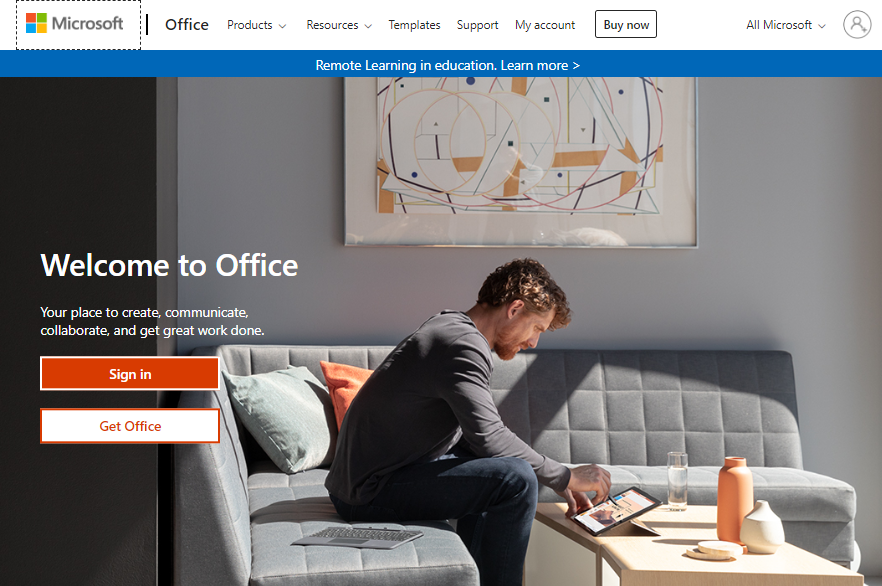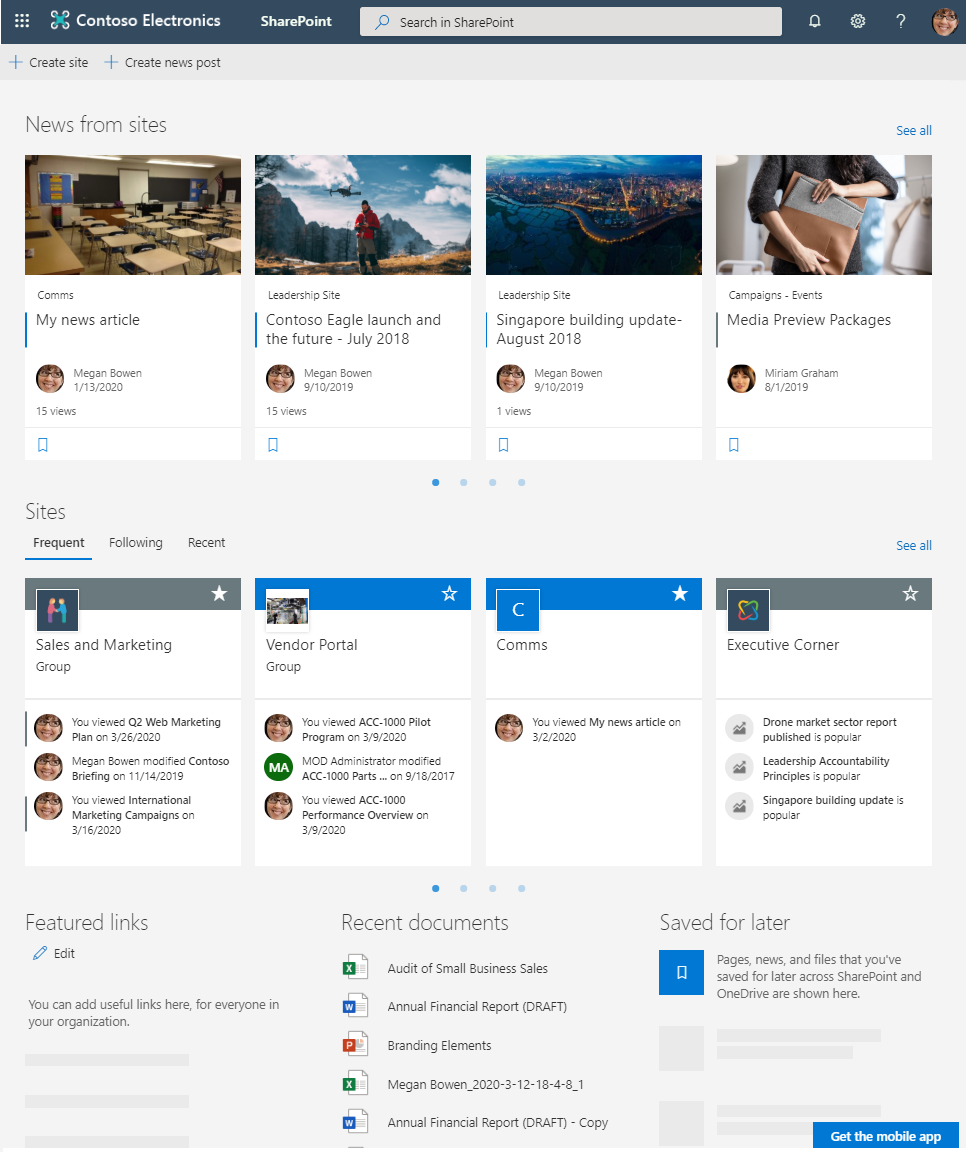The SharePoint start page is the central location that shows you relevant content from all the SharePoint sites that you have access to in your organization. From here, you can easily get to the sites that you are following, frequently visit, or have recently visited. This page also lets you search for content across all the SharePoint sites that you may have access to.
This recipe shows you how to log in to Microsoft 365 and then browse to the SharePoint Online home page from there.
Getting ready
To be able to browse to the SharePoint start page, your organization should have purchased one of the Microsoft 365 products that contain SharePoint. In addition, they should have assigned you a license to use SharePoint Online.
How to do it...
To access the SharePoint Online home page, follow these steps:
- Browse to www.office.comand click theSign in button, as shown in the following screenshot:

- Log in using the email ID and password provided, as described in the Signing in to Microsoft 365 topic in Chapter 1, Overview of Microsoft 365.
- As shown in the following screenshot, you will be directed to the Microsoft 365 home page upon a successful sign-in:

- Click the SharePoint icon highlighted in the preceding screenshot.
- Doing so will take you to the SharePoint start page, which should look similar to the following:

That's it! You just learned how to log in to Microsoft 365 and browse to the SharePoint start page of your organization. The content that you will see on this page is personalized to you and can be customized by your organization.
How it works...
The SharePoint start page shows your interactions across all SharePoint sites that you may have access to. In short, this page lets you get to what's most relevant to you, even without you having to search for the content. The following is a brief description of the functionality and different sections on this page, starting from the top left and going toward the bottom right:
- Microsoft 365 Suite Bar: The blue bar at the top is called the Suite Bar in Microsoft 365. We discussed the suite bar as part of Chapter 1, Overview of Microsoft 365.
- Create site and Create news post: Clicking Create Sitewalks you through the steps of creating a new site in your SharePoint environment. We'll discuss this in more detail as part of the Creating a modern site recipe later in this chapter. Clicking Create news post helps you publish a new news post from within a site of your choice. Please note that these options are only available to you through the SharePoint start page if they are enabled by your organization. We'll discuss this in more detail as part of the Adding a page recipe in Chapter 3, Working with Modern Sites in SharePoint Online.
- News from sites: As the title suggests, this section shows you the news from your sites in one single place. You can alsobookmark (that is, Save for later) a news item so that it shows up in your list of Saveditems on this page.
- Sites - Frequent tab: As the title suggests, this section shows you tiles containing information about your most visited sites. In addition to the name of the site and a link to it, each tile shows statistics about when you last visited the site, when and who last modified anything on the site, and, optionally, what's popular in the site.
- Sites - Following tab: This section shows you a list of the sites that you are following. The information shown for each site is similar to that shown on the Frequent tab. When you create a site, SharePoint automatically adds it to the list of sites that you are following. To follow an existing site, you can click the Not following text toward the top right of any page on that site, as shown in the following screenshot:

- Sites - Recent tab: This section shows a list of sites that you recently visited. The information shown for each site is similar to that shown on the Frequent tab.
- Featured links: This section lets you manage links that you may want to bookmark for the entire organization to view. Any changes that you make to this section by adding, editing, or removing links will show up for the entire organization. Only users that have the requisite admin access can maintain the Featured linksin this section.
- Saved for later: This section shows content, such as news items, that you may have saved for later.
- Recent documents: This section shows you a list of your recent documents across all of SharePoint and OneDrive for Business.
- Get the mobile app: SharePoint has a very robust mobile app that lets you access your SharePoint Online content on the go. Clicking the Get the mobile appbutton takes you to a page that helps you download the mobile app. You will need to enter a mobile number or email ID on this page. Microsoft 365 will then send a link to this mobile number or email ID. You can then use this link to download the SharePoint app and log in to it to view your content on the go.



